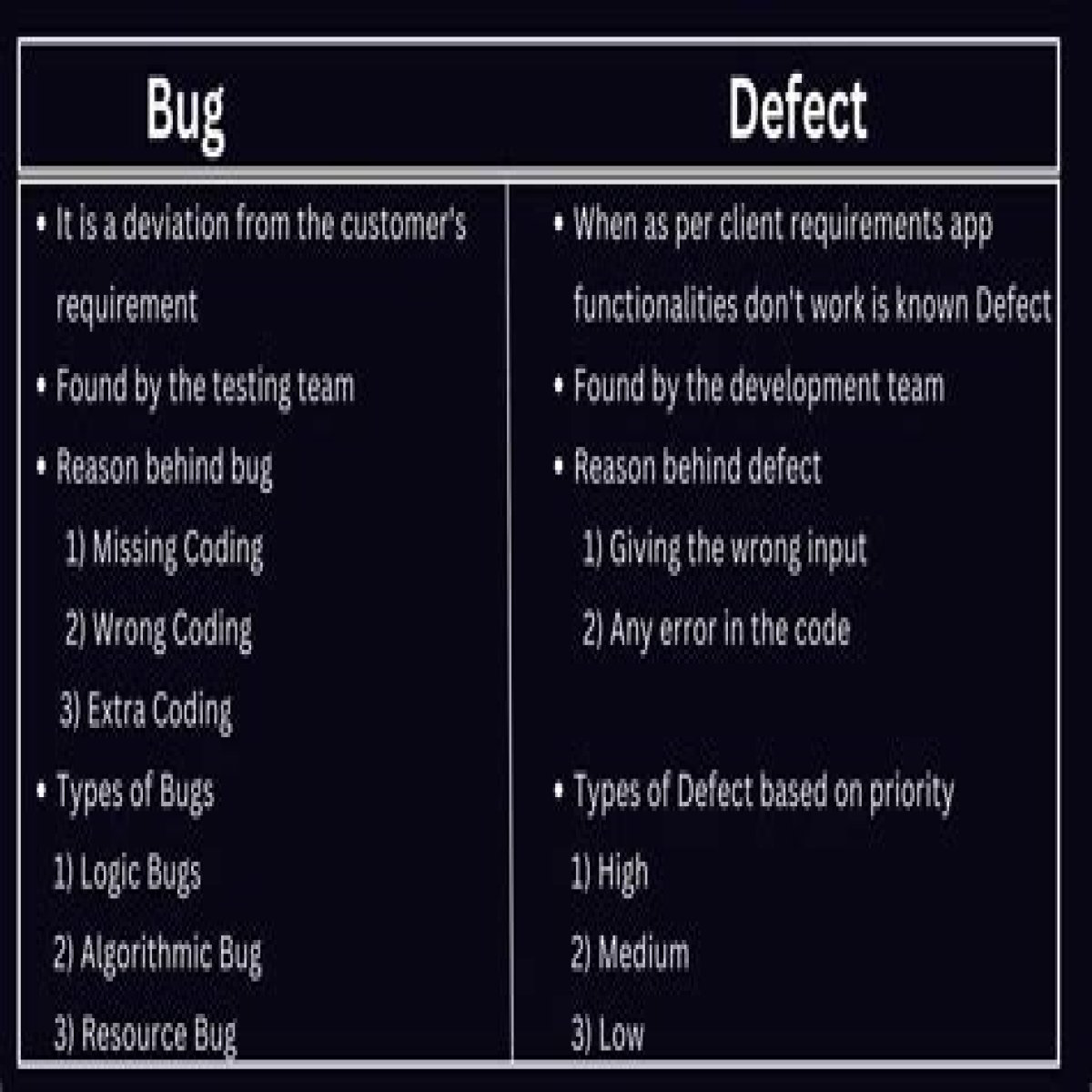The terms “bug” and “defect” are often used interchangeably in the software development world. While these two words may seem to be the same, there are subtle differences between them. Understanding these differences is important for software developers to effectively communicate with their colleagues and to ensure the quality of their software projects.
What is a Bug?
A bug is an error or flaw in a program. Bugs are usually unintentional and unexpected, arising from mistakes or misinterpretations made by the people who originally wrote the code. Bugs can cause programs to crash or behave unpredictably, leading to unexpected results.
Bugs are usually identified by the developers during the software development process. Developers use debugging tools to help them identify and fix bugs. A bug report is generated when a bug is found, which details the bug and the steps necessary to reproduce it.
What is a Defect?
A defect is a deviation from what is expected or specified in the software requirements. Defects are usually intentional and expected, arising from incorrect requirements or design. Defects can cause programs to fail to meet their specified requirements, leading to unsatisfactory results.
Defects are usually identified by the testers during the software testing process. Testers use various techniques such as black-box testing, white-box testing, and exploratory testing to help them identify and document defects. A defect report is generated when a defect is found, which details the defect and the steps necessary to reproduce it.
Difference Between Bug and Defect
The main difference between a bug and a defect is that bugs are usually unintentional and unexpected, while defects are intentional and expected. Bugs are usually identified by the developers during the development process, while defects are usually identified by the testers during the testing process.
Another difference is that bugs are usually identified by debugging tools, while defects are usually identified by test cases. Bugs are usually reported in bug reports, while defects are usually reported in defect reports.
Bug vs. Defect: Key Points
- A bug is an error or flaw in a program, while a defect is a deviation from what is expected or specified.
- Bugs are usually unintentional and unexpected, while defects are intentional and expected.
- Bugs are usually identified by the developers during the development process, while defects are usually identified by the testers during the testing process.
- Bugs are usually identified by debugging tools, while defects are usually identified by test cases.
- Bugs are usually reported in bug reports, while defects are usually reported in defect reports.
Bug and Defect Prevention
The best way to avoid bugs and defects is to ensure that the software requirements are clear and well-defined. Additionally, developers should use coding standards and other best practices to ensure that the code they write is correct and of high quality.
Testers should use various techniques such as black-box testing, white-box testing, and exploratory testing to identify and document defects. Additionally, testers should use automated testing tools to help them identify and verify defects more quickly.
Bug and Defect Fixing
When a bug or defect is found, the development team should take steps to fix it as soon as possible. Developers should use debugging tools to help them identify and fix bugs. Additionally, they should use version control systems to track changes in the code and to ensure that fixes are implemented correctly.
Testers should use various techniques such as regression testing and exploratory testing to verify that fixes have been implemented correctly. Additionally, testers should use automated testing tools to help them identify and verify defects more quickly.
Bug and Defect Tracking
It is important to track bugs and defects in order to ensure that they are fixed in a timely manner. Development teams should use bug tracking systems to help them track and manage bugs. Additionally, they should use version control systems to track changes in the code and to ensure that fixes are implemented correctly.
Testers should use defect tracking systems to help them track and manage defects. Additionally, testers should use automated testing tools to help them identify and verify defects more quickly.
Conclusion
In conclusion, it is important to understand the differences between a bug and a defect. Bugs are usually unintentional and unexpected, while defects are intentional and expected. Developers should use debugging tools to help them identify and fix bugs, while testers should use various techniques such as black-box testing, white-box testing, and exploratory testing to help them identify and document defects. Additionally, it is important to track bugs and defects in order to ensure that they are fixed in a timely manner.
